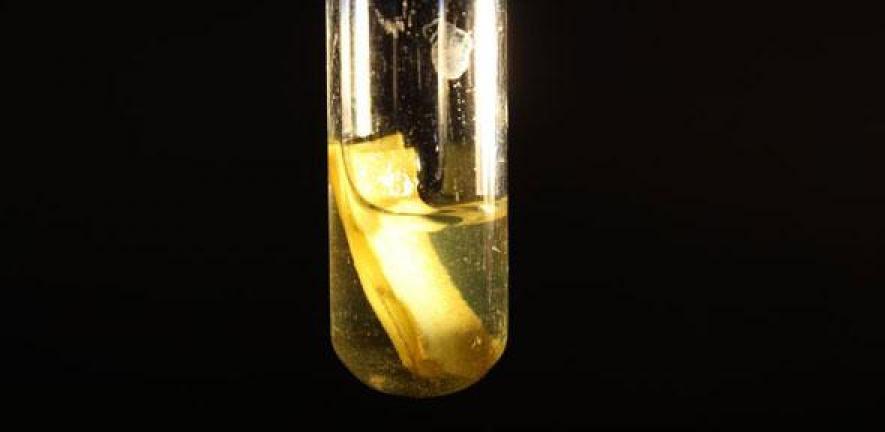
The technology uses natural light to generate hydrogen from biomass. Group leader Dr Erwin Reisner says: "Our sunlight powered technology is exciting as it enables the production of clean hydrogen from unprocessed biomass under ambient conditions."
The main component of plant biomass is Lignocellulose and up to now its conversion into hydrogen has only been achieved through a gasification process, which uses high temperatures to decompose it fully.
Dr Moritz Kuehnel, joint lead author on a new research paper published in Nature Energy, says: "Lignocellulose is nature's equivalent to armoured concrete. It consists of strong, highly crystalline cellulose fibres that are interwoven with lignin and hemicellulose, which act as a glue. This rigid structure has evolved to give plants and trees mechanical stability and protect them from degradation, and makes chemical utilisation of lignocellulose so challenging."
The new technology relies on a simple photocatalytic conversion process. Catalytic nanoparticles are added to alkaline water in which the biomass is suspended. This is then placed in front of a light in the lab, which mimics solar light. The solution is ideal for absorbing this light and converting the biomass into gaseous hydrogen, which can then be collected from the headspace. The hydrogen is free of fuel-cell inhibitors, such as carbon monoxide, which allows it to be used for power.
For more on this story go to the University Research website: Scientists harness solar power to produce clean hydrogen from biomass
Reference
David Wakerley et al: Solar-driven reforming of lignocellulose to H2 with a CdS/CdOx photocatalyst
Nature Energy 13th March 2017 DOI: 10.1038/nenergy.2017.21

